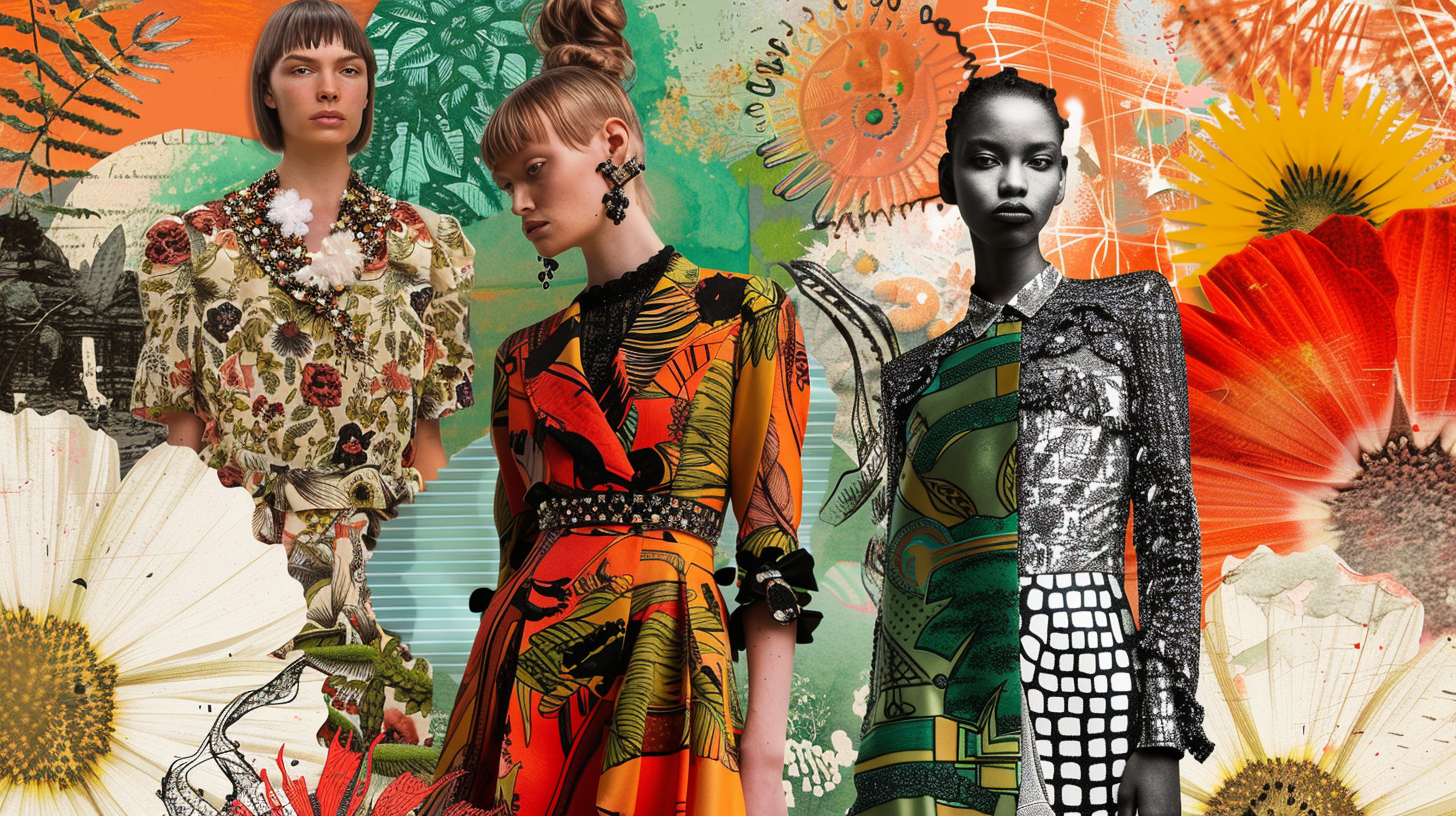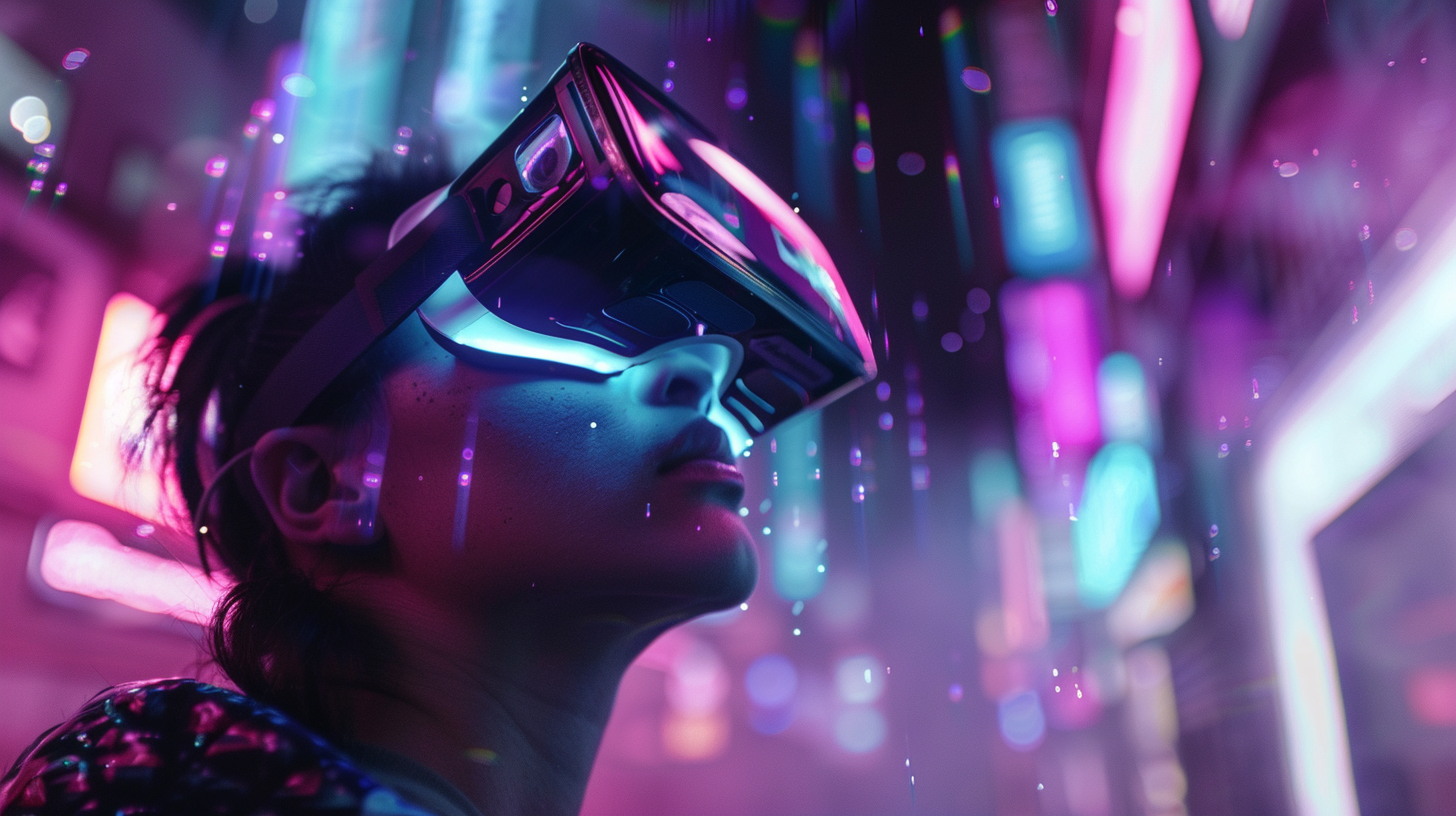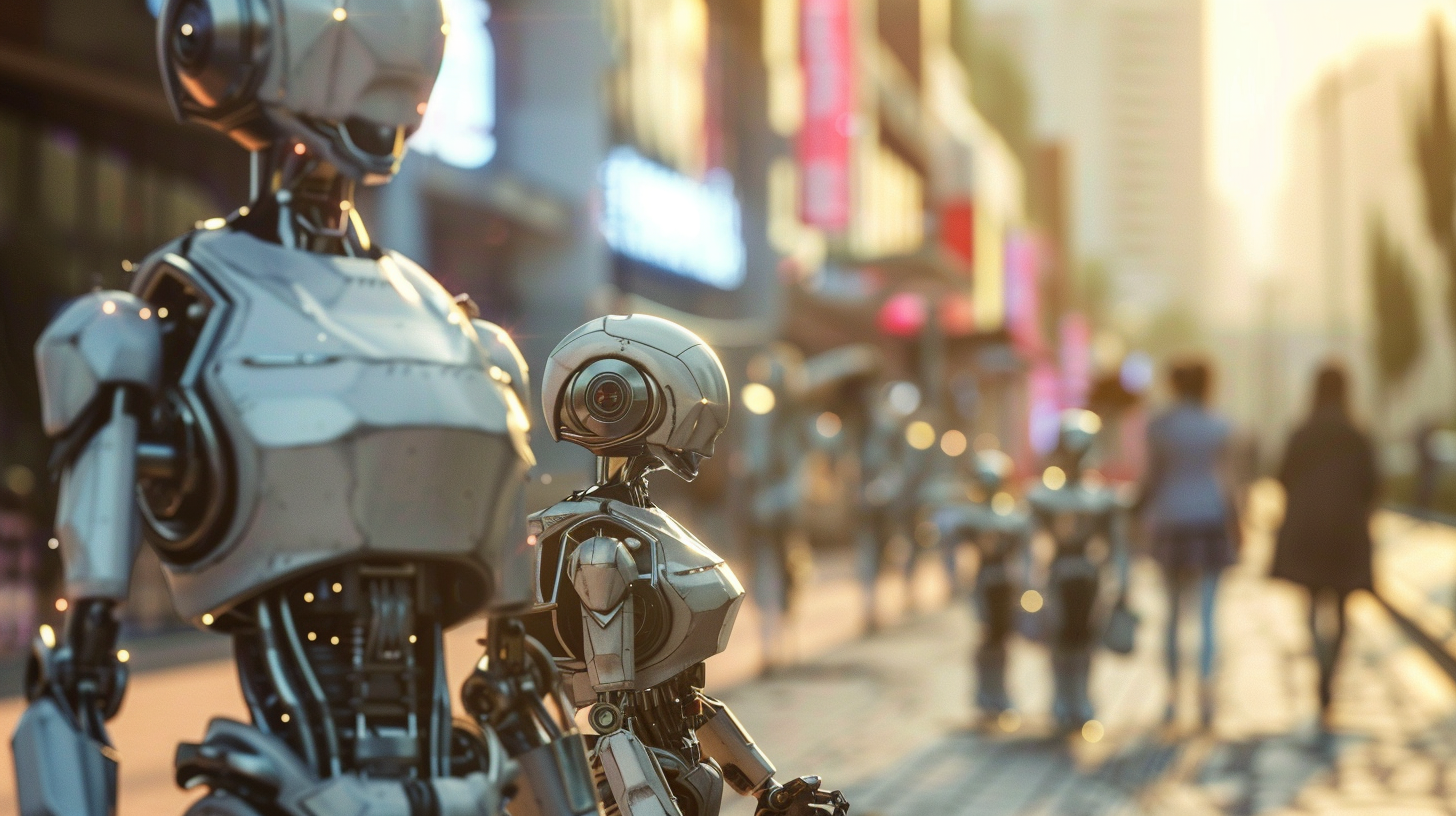Table of Contents Show
As we roam through the vibrant corridors of history, we find art and fashion intertwined in a captivating dance. They’ve always shared a canvas, each stroke of the brush or stitch in fabric telling a story of cultural evolution and personal expression. We’ve observed how iconic collaborations have blurred the lines between these two worlds, creating masterpieces that challenge our perceptions. From the hallowed halls of museums to the bustling energy of Fashion Week, the relationship between art and fashion invites us to explore deeper. But what drives this creative collision, and where is it leading us? Let’s venture on this journey together, uncovering the layers that weave art and fashion into the fabric of society.
Key Takeaways
- Artistic collaborations in fashion highlight creative freedom and innovation, blending iconic styles and expressions.
- Fashion leverages art’s power to communicate stories, moods, and cultural narratives through color, structure, and design elements.
- Sustainable fashion practices are redefined by creative recycling and the use of eco-friendly materials, marrying environmental responsibility with artistic expression.
- Technological advances in textile techniques, such as 3D printing and digital fabrication, push the boundaries of creativity in fashion.
Historical Intersections
Throughout history, art and fashion have intertwined, each influencing the other in profound and enduring ways. We’ve witnessed this fusion as a proof of human creativity and expression, where the boundaries between these two domains blur, offering us a domain where freedom isn’t just desired; it’s embodied.
In the Renaissance, artists draped their subjects in garments that mirrored the era’s shifting perspectives, embedding symbols of power, innovation, and a break from the medieval past. This wasn’t just clothing; it was a statement, a canvas that artists used to convey deeper narratives. We see a direct reflection of society’s evolving ethos in the fabric and designs, a dialogue between the wearer and the observer, steeped in the zeitgeist of the times.
Fast forward to the 20th century, and the relationship between art and fashion deepened. The modernist movements, with their bold rejection of traditional forms, found kindred spirits in fashion designers. They didn’t just dress the body; they challenged norms, using fashion as a vehicle for social commentary and transformation. This era underscored our belief in clothing as more than mere attire—it’s an extension of our identity, a form of personal freedom.
As we’ve moved through history, art and fashion have continually fed into each other, each iteration a reflection of the human desire to express, to break free from convention, and to communicate without words. They’ve given us a language of freedom, a way to navigate the complexities of identity and culture, proving that the interplay between art and fashion isn’t just historical—it’s a dance of liberation.
Iconic Collaborations
Over the years, several iconic collaborations between artists and fashion designers have reshaped our understanding of style and creativity. These partnerships have not only blurred the lines between different creative domains but have also introduced us to a world where freedom of expression reigns supreme.
One of the most groundbreaking collaborations was between Louis Vuitton and Takashi Murakami. Together, they transformed the traditional LV monogram into a colorful canvas, infusing the luxury brand with a playful spirit that appealed to a broader, younger audience. It was a bold move that paid off, proving that when art and fashion collide, the results can be both commercially successful and culturally significant.
Similarly, Yayoi Kusama’s collaboration with Marc Jacobs for Louis Vuitton brought her obsessive dots and psychedelic colors to the forefront of high fashion. This partnership not only celebrated Kusama’s unique artistic vision but also showed us how art can be wearable, bringing it closer to everyday life.
In more recent times, we’ve seen Adidas team up with artists like Kanye West and Pharrell Williams. These collaborations have turned athletic wear into statements of identity and style, demonstrating that fashion can be a platform for artists to reach new audiences and express themselves in novel ways.
These iconic collaborations serve as a proof of the power of artistic freedom in fashion. They encourage us to explore new territories, break from convention, and ultimately, express our individuality with boldness and creativity. In this ever-evolving landscape, the fusion of art and fashion continues to offer us limitless possibilities to define who we are and how we want to be seen.
The Role of Museums
Building on the dynamic interplay between artists and fashion, museums have emerged as pivotal spaces where this fusion is celebrated and made accessible to the public. We’ve seen firsthand how these cultural institutions not only preserve but also inspire the dialogue between fashion and art, offering a platform where the boundaries are blurred and creativity knows no limits.
Museums serve as custodians of heritage and innovation, providing a sanctuary where the freedom of expression is not just encouraged but celebrated. They’ve become arenas where the past meets the present, urging us to rethink our perceptions of fashion and art as separate entities. It’s here that we witness the tangible outcomes of creative minds who dare to dream and challenge the norm.
To evoke the emotion tied to this symbiotic relationship, consider the following table:
| Emotion | Art | Fashion |
|---|---|---|
| Wonder | Timeless pieces | Avant-garde designs |
| Curiosity | Artist backstories | Designer inspirations |
| Awe | Masterful techniques | Innovative materials |
| Joy | Colorful canvases | Vibrant collections |
| Reflection | Societal impacts | Cultural significance |
This table isn’t just a list; it’s a proof of what we experience when we step into a museum. The blend of art and fashion ignites emotions ranging from wonder to reflection, encouraging us to explore the depths of our creativity and to appreciate the beauty in breaking free from conventional boundaries.
Museums, in their essence, champion this freedom. They remind us that to truly innovate, we must be willing to explore the intersections of our world, where art and fashion collide and create something altogether exhilarating.
Fashion Week Highlights
As we shift from the halls of museums to the vibrant runways, Fashion Week offers a fresh perspective on the fusion of art and fashion. It’s here, amidst the flurry of cameras and the shimmer of fabrics, that we see art’s influence on fashion come alive. Designers become artists, their collections paintings in motion, each piece a validation of creativity’s boundless domains.
This season, we’ve seen runways transform into canvases, where traditional boundaries blur, and innovation takes center stage. We’re talking about collections that don’t just push the envelope; they tear it open. Think bold patterns that dance across fabrics like brush strokes, silhouettes that challenge the norm, and color palettes inspired by masterpieces.
We’ve also witnessed an incredible embrace of diversity and inclusivity, a celebration of freedom in its purest form. Fashion Week has become a platform for voices once silenced, showcasing designs that reflect the world’s vast tapestry of cultures. It’s a powerful reminder that fashion, much like art, is for everyone.
In this kaleidoscope of creativity, sustainability has emerged as a prevailing theme. Designers are not just crafting fashion; they’re sculpting a future where style and environmental consciousness walk hand in hand. We’re seeing upcycled materials take center stage, proving that beauty and responsibility can coexist.
As we revel in these highlights, it’s clear Fashion Week is more than a showcase of trends. It’s a celebration of freedom, a fusion of art and fashion that invites us to dream bigger, bolder, and more brilliantly than ever before.
Artistic Techniques in Textiles
Exploring the runway’s vivid displays further, we now turn our attention to how artistic techniques in textiles redefine the essence of fashion. Diving into the heart of creativity, we uncover the myriad of ways artists and designers collaborate, blending traditional and innovative methods to create breathtaking pieces that speak volumes. This fusion not only elevates clothing to wearable art but also serves as a proof of the boundless possibilities when we dare to dream beyond conventional boundaries.
Here are four artistic techniques in textiles that captivate our imagination:
-
Embroidery and Beadwork: Handcrafted stitches and meticulously placed beads add depth and story to fabric, turning simple garments into canvases of folklore and personal tales. This technique honors heritage while inviting the modern wearer to carry a piece of history with them.
-
Digital Printing: The digital domain offers a playground for designers to experiment with high-definition images and intricate patterns, unachievable by hand. This method bridges the gap between digital art and material reality, allowing for unprecedented vibrancy and detail.
-
Fabric Manipulation: Techniques such as pleating, folding, and draping transform flat textiles into three-dimensional sculptures. This art form challenges our perception of silhouette and structure, encouraging us to see the body as a landscape for exploration.
-
Laser Cutting: Precision and innovation meet in laser-cut textiles, where intricate patterns and designs are etched into fabric. This method merges technology with tradition, crafting pieces that are both futuristic and reminiscent of delicate lacework.
Color Theory Impact
We now investigate how color theory profoundly shapes our perception of fashion, influencing both the creation and emotional impact of each piece. Color isn’t just a visual element; it’s a language that communicates moods, emotions, and stories. When designers harness the power of color theory, they’re not just making a style statement—they’re evoking feelings and reactions, crafting an experience that goes beyond the fabric.
In the domain of fashion, color can play the hero or the villain. It has the power to transform a simple design into something extraordinary, or conversely, to diminish the appeal of an otherwise stunning piece. We’re drawn to certain colors for what they signify—red for passion, blue for calm, yellow for joy. This isn’t happenstance; it’s the result of careful consideration and understanding of color psychology.
Additionally, the interplay of colors in fashion can either create harmony or discord, guiding the viewer’s eye and shaping their perception of the garment. A well-considered color palette can unite disparate elements of a collection, providing coherence and a visual theme. It’s this thoughtful application of color theory that elevates fashion from mere clothing to wearable art.
As we explore the symbiotic relationship between art and fashion, it’s clear that our freedom to express and interpret is often channeled through the hues we choose to wear. By embracing the principles of color theory, fashion designers empower us to communicate who we are and how we feel, without uttering a single word. In this way, color becomes a liberating force, a tool for personal expression in the vast canvas of fashion.
Sculpture and Structure
We’re now turning our attention to the fascinating world of sculpture and structure in fashion. It’s evident how sculptural forms in apparel and architectural influence shape modern design, creating pieces that challenge our perceptions of clothing. We’ll explore how these elements fuse together, bringing a new dimension to fashion that’s both innovative and visually compelling.
Sculptural Forms in Apparel
Many fashion designers have drawn inspiration from the world of sculpture, incorporating its forms and structures into their apparel designs. They’ve turned fabric into a playground for artistic expression, much like sculptors do with clay or marble. Here’s how they’ve brought this vision to life:
- Asymmetrical draping that mimics the fluidity and motion of contemporary sculptures.
- Bold, exaggerated silhouettes that challenge traditional notions of shape and form.
- Textural contrasts creating a tactile experience reminiscent of a sculptor’s varied finishes.
- Three-dimensional embellishments that add depth and intrigue, encouraging the viewer to explore the garment from every angle.
In doing so, they’ve granted us the freedom to wear art, to embody it, transforming everyday attire into a statement of creative identity.
Architectural Influence on Design
Just as sculptors shape clay, architects mold our environments, their principles profoundly influencing fashion design through structure and form. We’re witnessing an era where the rigidity of buildings and the fluidity of garments blend, offering us a canvas to express our freedom and creativity. It’s not just about wearing clothes; it’s about donning pieces that reflect the innovation and strength of our surroundings.
| Influence | Example in Fashion |
|---|---|
| Geometric shapes | Structured shoulder pieces |
| Open spaces | Flowing, draped garments |
| Symmetry | Balanced, cohesive outfits |
| Textural elements | Fabrics mimicking concrete or glass |
This integration encourages us to explore beyond traditional boundaries, embracing the boldness and beauty of architectural inspiration in our personal style.
Digital Art Innovations
Digital art innovations are revolutionizing the way fashion designers create and present their collections, offering new territories of creativity and expression. These advancements allow us to break free from traditional constraints, pushing the boundaries of what fashion can be. It’s not just about the clothes anymore; it’s about creating an immersive experience that captivates the imagination.
-
3D Printing Technology: This has transformed the way we think about garment construction. Designers can now create complex, intricate designs that were once impossible, bringing a level of precision and creativity that goes beyond the fabric. Imagine wearing a dress that’s as detailed as a sculpture, each layer telling its own story.
-
Virtual Reality (VR) and Augmented Reality (AR): These tools have opened up new territories for showcasing fashion. We’re no longer limited to runway shows; we can now immerse ourselves in digital territories where the fashion interacts with us on a personal level. Picture stepping into a virtual world where the clothes you see can be tried on in an instant, transforming the shopping experience.
-
Digital Fabric Printing: This allows for unprecedented levels of customization and detail in patterns. Gone are the days of limited color palettes and simple designs. Now, every piece of fabric can be a masterpiece, full of vibrant colors and intricate patterns that tell a unique story.
-
AI-Driven Design: Artificial intelligence is enabling us to explore new forms of creativity, generating designs that blend countless cultural and artistic influences in ways we’ve never seen before. It’s like having an infinite source of inspiration at our fingertips, pushing us to explore the unknown.
In embracing these digital art innovations, we’re not just making fashion; we’re creating freedom.
Street Art Influence
Street art has burst onto the fashion scene, infusing collections with its vibrant energy and rebellious spirit. We’ve witnessed how the raw, unfiltered expressions found on city walls and alleyways have seamlessly transformed onto the fabric of our clothes, embodying a daring aesthetic that’s as much about making a statement as it is about style. This movement isn’t just about adopting graffiti as a print; it’s about embracing an entire culture that celebrates freedom, individuality, and the breaking of conventions.
We’re seeing designers collaborate with street artists, bringing authenticity and depth to their collections. These partnerships are more than mere trends; they’re a confirmation to the evolving relationship between the observer and the creator. Fashion, like street art, has become a platform for voicing opinions, challenging societal norms, and expressing one’s identity without restraint.
In addition, the influence of street art extends beyond the visual. It’s about adopting the ethos of street culture, where there are no rules, only limitless possibilities. We’re encouraged to mix, match, and clash, to wear our clothes inside out or upside down if it feels right. It’s this spirit of rebellion and innovation that’s driving fashion forward, making it an exciting time for those of us who crave authenticity and dare to be different.
As we continue to explore this dynamic intersection, we’re reminded that fashion isn’t just about what we wear; it’s a reflection of who we are and what we stand for. Street art, with its bold colors, provocative themes, and unapologetic presence, invites us to live freely and color outside the lines.
Sustainability Through Creativity
We’ve seen how street art reshapes fashion, now let’s explore how sustainability fosters innovation. Through eco-friendly materials and creative recycling, designers are crafting the future of fashion. This approach not only promotes environmental responsibility but also injects fresh creativity into designs.
Eco-Friendly Materials Innovation
In the domain of eco-friendly materials innovation, artists and designers are pioneering sustainable solutions to revolutionize the fashion industry. We’re witnessing a thrilling era where creativity meets responsibility, leading us toward a future where our fashion choices don’t just look good but do good too.
Here’s a glimpse into the materials shaping this movement:
- Bamboo fabric – Its rapid growth and biodegradability make it a superstar.
- Recycled polyester – Giving a second life to plastic bottles.
- Organic cotton – Cultivated without harmful chemicals, preserving our planet’s health.
- Mushroom leather – A cruelty-free, biodegradable alternative that’s changing the game.
We’re not just wearing our values on our sleeves; we’re weaving them into every thread of innovation, pushing the boundaries of what’s possible in fashion.
Creative Recycling in Design
Through creative recycling, we’re transforming waste into wearable art, melding sustainability with cutting-edge design. We’re breaking free from the traditional confines of fashion, proving that one person’s trash can truly become another’s treasure. This isn’t just about making do; it’s a bold statement of freedom and innovation. We’re crafting unique pieces that stand out, not just for their origins, but for their undeniable style.
We believe in the power of reinvention. By reimagining discarded materials, we’re not only conserving resources but also challenging the fashion industry to think differently. We’re proving that sustainability doesn’t limit creativity; it fuels it. Join us in this movement, where fashion becomes a canvas for environmental activism, and every creation is a step towards a more sustainable world.
Cultural Narratives
Exploring cultural narratives reveals how deeply art influences fashion trends and expressions. We’re diving into the intricate tapestry of cultures that shape the way we dress, showcasing our identities and stories through the clothes we wear. The fusion of art and fashion not only celebrates diversity but also fosters a deeper understanding and respect for the myriad of cultures around the globe.
Here are four ways cultural narratives are vividly brought to life in fashion:
-
Traditional motifs and patterns: Designers often draw inspiration from ancient symbols, incorporating them into modern attire. This creates a bridge between past and present, allowing us to wear pieces that carry centuries of history and meaning.
-
Color symbolism: Colors carry significant meanings in different cultures. Fashion harnesses this power to convey messages or emotions, from the tranquility of blue in Japanese kimonos to the vibrant reds in Indian bridal wear, each hue tells a story.
-
Fabric choice: The materials used in fashion can also reflect cultural heritage. From the luxurious silk of China to the rugged tartans of Scotland, fabrics connect us to our roots and the land’s essence.
-
Artistic techniques: Age-old techniques like African batik or Japanese Shibori dyeing are being revived in contemporary fashion, merging tradition with innovation. This not only keeps these skills alive but also introduces them to new audiences craving authenticity.
We’re collectively on a journey, breaking free from the constraints of uniformity and embracing the rich tapestry of human culture through fashion. It’s a celebration of freedom, identity, and the enduring link between art and the clothes we choose to wear.
Future Directions
As we look ahead, it’s clear that the intersection of art and fashion will continue to evolve, pushing boundaries and setting new trends. We’re stepping into an era where the fusion of digital art and wearable technology isn’t just a possibility—it’s inevitable. Imagine clothes that change color based on your mood or patterns that shift with the rhythm of the city around you. This isn’t just fashion; it’s a form of self-expression that’s as limitless as our imagination.
We’re also seeing a resurgence of sustainability and ethical practices, where recycled materials become canvases for artists and designers alike. It’s a movement towards conscious creation, where every piece tells a story of preservation and respect for our planet. This isn’t just about looking good; it’s about making a statement that we’re part of a larger community, committed to making positive changes.
Furthermore, the collaboration between artists and fashion designers is set to deepen, creating a rich tapestry of cultural narratives and avant-garde designs. We’re not just wearing clothes; we’re wearing pieces of art that carry the soul of their creators. It’s a celebration of individuality, where every garment is a proof to the creative freedom that defines our era.
In this future, we’re not just passive consumers; we’re active participants in a creative revolution. We’re breaking free from the constraints of traditional fashion, embracing a world where art and fashion collide in the most beautiful, unexpected ways. It’s a future we can’t wait to explore, together.
Conclusion
We’ve explored the mesmerizing dance between art and fashion, witnessing how they enrich and inspire each other. From the tapestries of history to the vibrant streets of today, they merge, creating a canvas of cultural expression. Imagine Yayoi Kusama’s polka dots leaping from canvas to catwalk, transforming garments into moving art. This synergy promises to evolve, pushing boundaries further, weaving sustainability and innovation into the fabric of our future. Together, art and fashion will continue to sketch our world’s ever-changing story.







